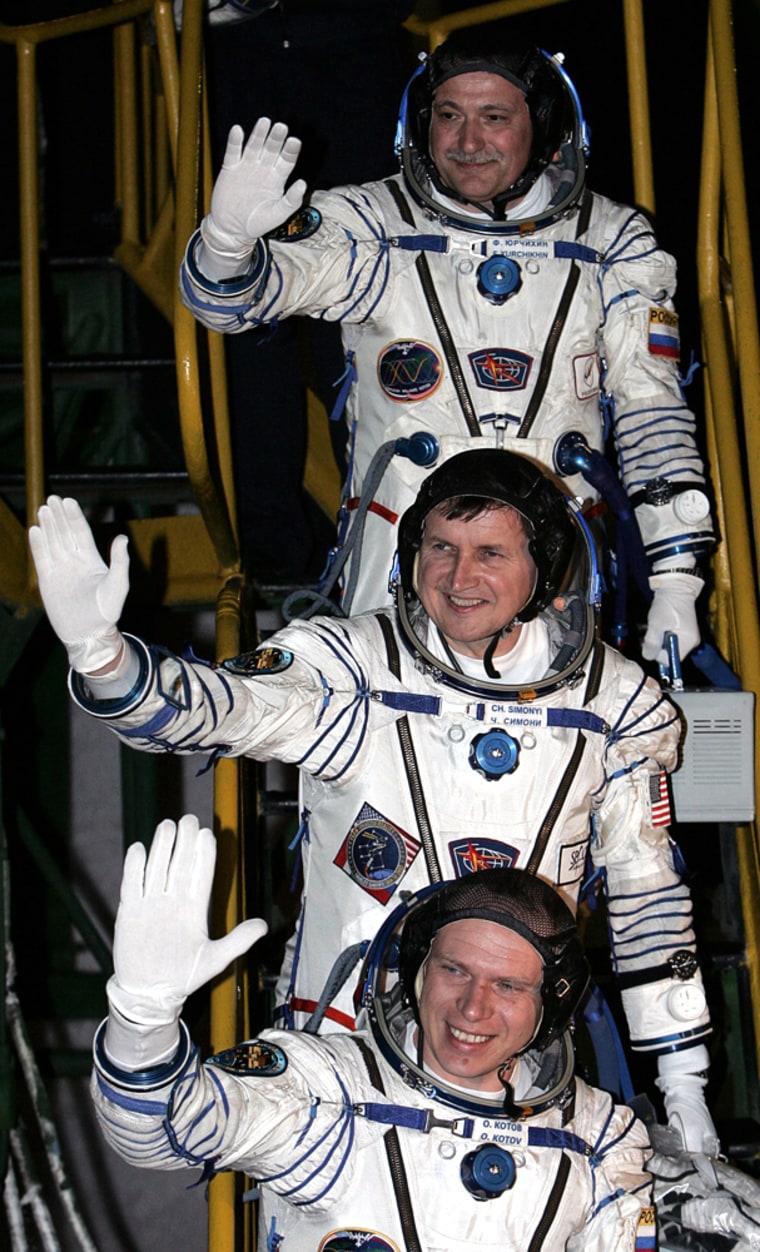The final frontier may be closer than you think.
Charles Simonyi, the software billionaire, has just come back from his visit to the International Space Station (ISS). Scotty from Star Trek — or at least a portion of the cremated remains of James Doohan, the actor who played him — is about to take flight. And everybody with an entrepreneurial eye and billion-dollar bankroll is buzzing about the prospect of commercial space flight for the masses.
I just have one question: If you’re flying to the moon and your bags end up in Cleveland, will they reimburse you for your troubles?
OK, so no one is promoting scheduled service to the Sea of Tranquility quite yet, but there are plenty of plans afoot to open up the heavens to those of us who aren’t incredibly rich or recently deceased. Spaceports are being built, travel agents are taking calls, and a handful of companies are already selling seats for upcoming flights. If you want to slip the surly bonds of Earth, it’s time to start planning.
We’ll all float on, alright
At this point, most of the proposed flights involve rocketing 100 km above the earth, experiencing four to five minutes of suborbital weightlessness and gliding safely back down to terra firma. Mission to Mars it’s not, but it’s obviously a bit more involved than catching the 6:30 shuttle from Logan to LaGuardia.
First, there’s the cost. , one of the front-runners in the commercial space race, is charging $200,000 for a seat on SpaceShipTwo, which it hopes to launch in 2009 or 2010. That’s a bargain compared to the $20–$25 million that a trip to the ISS will run you, but it’s still a hunk of Federation Credits.
The good news is that you may be able to buy that seat with frequent flyer miles or credit card rewards. Members of Virgin Atlantic’s Flying Club can book a spot for a mere 2 million miles, while American Express members can reserve a trip for 20 million points through . As soon as I get off work, I’m heading to Costco for a few RVs, a couple of diamond necklaces and every roll of toilet paper they’ve got.
Then there’s the preparation. Most of the trips currently being offered include several days of pre-flight training designed to prepare passengers for both the rigors and the wonders of space travel. Using centrifuges, hypoxic chambers and other high-tech simulators, passengers will get a better sense of the G-forces they’ll face during launch and re-entry and the weightlessness they’ll experience in between.
If you know what to expect, goes the logic, you’ll enjoy it more. You may even be able to avoid boldly barfing where quite a few have barfed before.
The sky’s the limit
Currently, you can count the number of space tourists on one hand, but the proponents of commercial space travel hope to expand that number exponentially in the years to come. And suborbital hops to experience zero-G flight and pearl-in-the-heavens views of Earth are apparently just the beginning.
, for example, hopes to blast past their sub-orbital competitors with flights that will have passengers circling Earth for up to a week. (Seats are $2 million each, although a few seats are apparently available at a promotional fare of $250,000.) And Space Adventures is advertising a trip to the dark side of the moon for a cool $100 million. You don’t get to land, but you do get to experience something that only Apollo astronauts and the members of Pink Floyd can appreciate.
Meanwhile, the folks at Virgin Galactic hope to build off Virgin Atlantic’s earth-based route map and eventually offer rocket-powered point-to-point service around the globe. New York to Hong Kong with a layover on the edge of space, perhaps, or London to Sydney with a spot of weightlessness thrown in.
Of course, such trips are still a long way off, but there’s certainly no harm in pondering what the future of commercial space travel might look like. Will there be meal service? Complimentary Tang and snack boxes at $5,000 a pop? And, assuming prices eventually come down to less-than-stratospheric levels, will space travel turn out to be an exciting alternative to air travel or simply take the stress and aggravation of flying to new heights?
I can already envision it. Ticket in hand, I board my flight, only to find that I’ve got the middle seat between Kirstie Alley and Refrigerator Perry. As I squeeze between them, the pilot announces that we’ll be delayed, although he doesn’t know for how long. As the minutes turn to hours, “The Fridge” starts snoring, Kirstie decides to call Jenny and I feel myself slipping into a barely suppressed state of space rage that I realize will accomplish absolutely nothing.
After all, in space no one can hear you scream.
